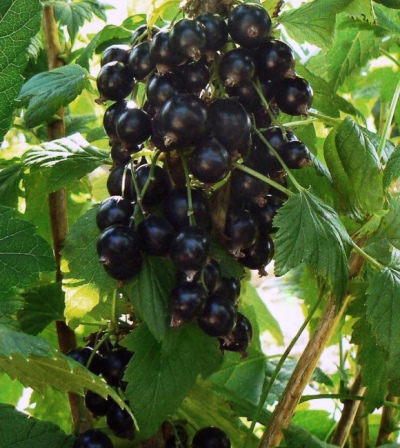
- Authors: Voluznev A.G., Zazulina N.A., Rainchikova G.P., Belarusian Research Institute of Potato and Horticulture
- Appeared when crossing: Paulina (Pavlinka) x Belarusian sweet
- Year of approval: 1996
- Ripening terms: average ripening
- Growth type: vigorous
- Yield: high
- Appointment: universal
- Berry weight, g: 1,2-1,4
- Tasting assessment: 4,8
- Escapes: medium, curved, brown-red, matte
Vavilov's memory is one of the most successful varieties bred on the territory of the post-Soviet space. It receives only positive feedback from gardeners: the culture is undemanding to care, frost-resistant, drought-resistant, perfectly adapts to various climate characteristics.
Breeding history
The variety is dedicated to the domestic plant grower and biologist N.I. Vavilov, the founder of agricultural science in the USSR. Culture appeared a very long time ago on the basis of the Belarusian Research Institute of Potato and Horticulture. The work on the creation of a new currant was carried out by Voluznev, Zazulina and Rainchikova. The materials of Belorusskaya Sweet and Paulinka (Pavlinka) were taken as the parental pair. Twenty-year variety trials (1978-1996) were crowned with success, so the new variety Pamyat Vavilova was included in the State Register for the Russian Federation. And five years earlier, in 1991, he was enrolled in the register of varieties of tree and shrub species of the Republic of Belarus.
Description of the variety
It is a vigorous plant with medium to low branching and is excellent for mechanized harvesting. Therefore, the variety is often used for commercial cultivation. A cluster with berries is found both medium and short, includes 8-9 berries. The shoots are curved, the thickness is medium. Their color is reddish-brown, matte.
The leaf plates are large and green in color. There is a heart-shaped notch at the base of the leaves.
Fruit transportability is very high.
Characteristics of berries
The berries of the described variety are large, on average they are 1.2-1.4 grams. Moreover, they are almost black and shiny. The shape is round, the skin has an average density. The separation is dry.
Taste qualities
Tasting assessment of taste indicators - 4.8 points on a 5-point scale. Ordinary consumers note a sweet, pleasant taste, unobtrusive aroma. The ratio of acid and sugar is optimal. The purpose of the product is universal.
Ripening and fruiting
The growing season lasts 200 days. The variety belongs to crops of medium ripening. At the same time, the berries ripen together.

Yield
Yield indicators are impressive: from 1 bush they get 5-6 kilograms, and from one hectare - as much as 12 tons.
Growing regions
Variety Pamyat Vavilova is intended for the North Caucasus, North-West and Volga-Vyatka regions.
Landing
As for planting a culture, it is worth choosing open and well-lit places. The berries ripen well in the sun, and also get sick less. The site must be protected from drafts and wind.
The currant of the described variety grows well on moist soils, but it is important that the groundwater level is farther from the earth's surface (at least 0.8 m). Otherwise, the shallow root system will suffer from excess moisture. To plant a shrub, dig a hole 40 centimeters deep and in diameter. The bottom of the pit is lined with gravel drainage. Then it is fertilized to help the shrub adapt. And it also saves the gardener from the need to fertilize for another year.

Growing and care
Watering is one of the main components of currant care. In this case, the soil should be moistened to a depth of 30-40 centimeters: this is the placement of the root system of the berry bush. Watering is carried out either early in the morning or in the evening. Sawdust, peat, compost or sand mulch retains moisture well.
Loosening is also important, providing air to the roots, but it must be done very carefully and manually. The main feeding for the culture is carried out in the spring. In the spring months, fertilization helps the shrub wake up and grow. At this time, nitrogen-containing compounds are used, for example, a urea solution. In the fall, organic matter is used: for example, the soil near each currant bush must be dug up with 3-4 kg of compost or manure.




Disease and pest resistance
The culture has a high resistance to spheroteca and anthracnose. And also there is a relative resistance to the kidney mite. The variety can be affected by fungal diseases and leaf spot.

Currant is one of the most favorite crops of gardeners, it can be found on almost any personal plot. In order for the currant berries to be tasty and large, and the bush itself to be healthy and strong, you should properly care for, treat and protect the plant from harmful insects. It is important to recognize the signs of the disease in a timely manner and begin treatment in the early stages of plant damage.










































































